Polestar 1 exemplifies the evolution of electric car design
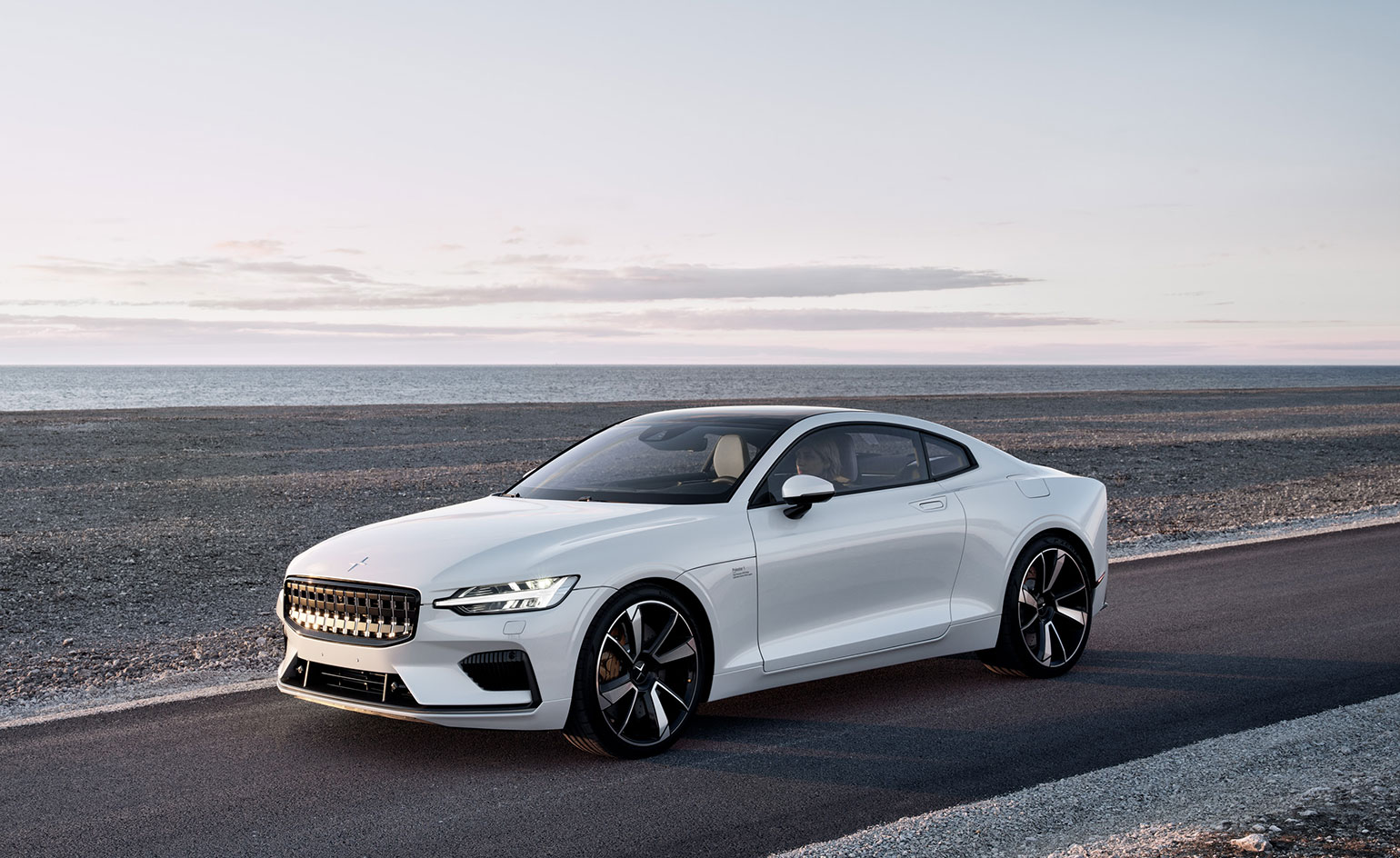
The new Polestar 1 looks curiously modest on the road. Few would guess this is a £139,000, 600-horsepower, technology-packed performance car driven by one of the most radical hybrid systems around. This is exactly how Polestar would like to be perceived. The new electric car company from Volvo wants to do things differently – it intends to be the progressive choice, the intellectual purchase, and part of this narrative is formed by a clear and concise, and heavily directed design theme. It makes for a compelling story. But more on this later. For now, we head to the outskirts of London to test the marque’s premier car, this Polestar 1. A support vehicle follows closely, for this is a preproduction model and there is a potential something may go wrong. It doesn’t, of course, and bar an emergency break lever, this is a perfectly polished product.
The Polestar 1 positions itself as a grand touring luxury coupé, and so it has been designed and engineered for a ride in comfort, on long distances and in various scenarios. It’s a stormy day, and yet the car drives with ease on the motorway and on wet, twisty, narrow country roads. The other cars to join the Polestar family from 2020 will be fully electric. This one though gets most of its power from a traditional 2.0 litre four-cylinder petrol engine, both turbo and supercharged to deliver 308-horsepower. This drives the front wheels and is amplified by a 68bhp electric motor. Then the rear wheels are powered by a pair of electric motors to develop a further 232bhp from the 34kWh battery pack, which also allows for an electric range of 93 miles. Finally, the combined 600bhp helps the Polestar 1 sprint to 60mph in just 4 seconds.
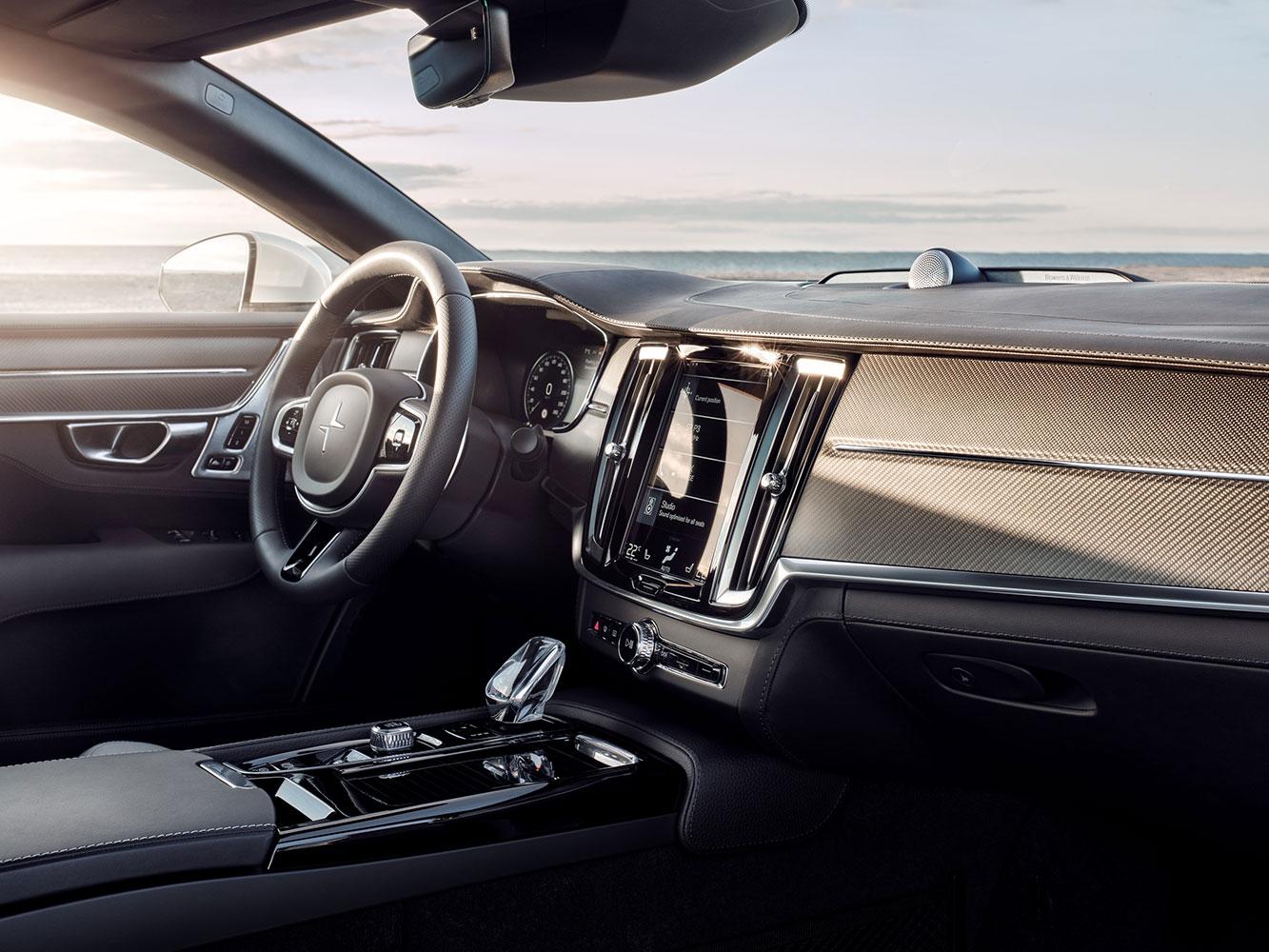
The Polestar 1 design is an evolution of the 2013 Concept Coupé, a study car that looked back to the future and to Volvo’s classics – namely the brilliant 1960s P1800. With its simple two-doors construction and a coupé silhouette, it essentially retains a classic motor car vernacular. This is largely on purpose, as the marque doesn’t feel it needs to invent an entirely new language of design for electric mobility – rather, the approach should be subtler. It is about offering clear, functional design. This Scandinavian theme also reflects a general trend with EVs for vehicle design that is more akin to tech products.
Carbon-fibre forms much of the body reducing some of the weight and allowing for a vast, low, panoramic roof that appears to be one single structure. It works well in enhancing the car’s sporty appearance and the feeling of spaciousness inside. The tinted glass element doesn’t open but cuts out some 95 per cent of UV light. There are slender frameless side mirrors, and the carbon allows for crisp and precise sharp edges and angles enhancing the Polestar 1’s technical expression.
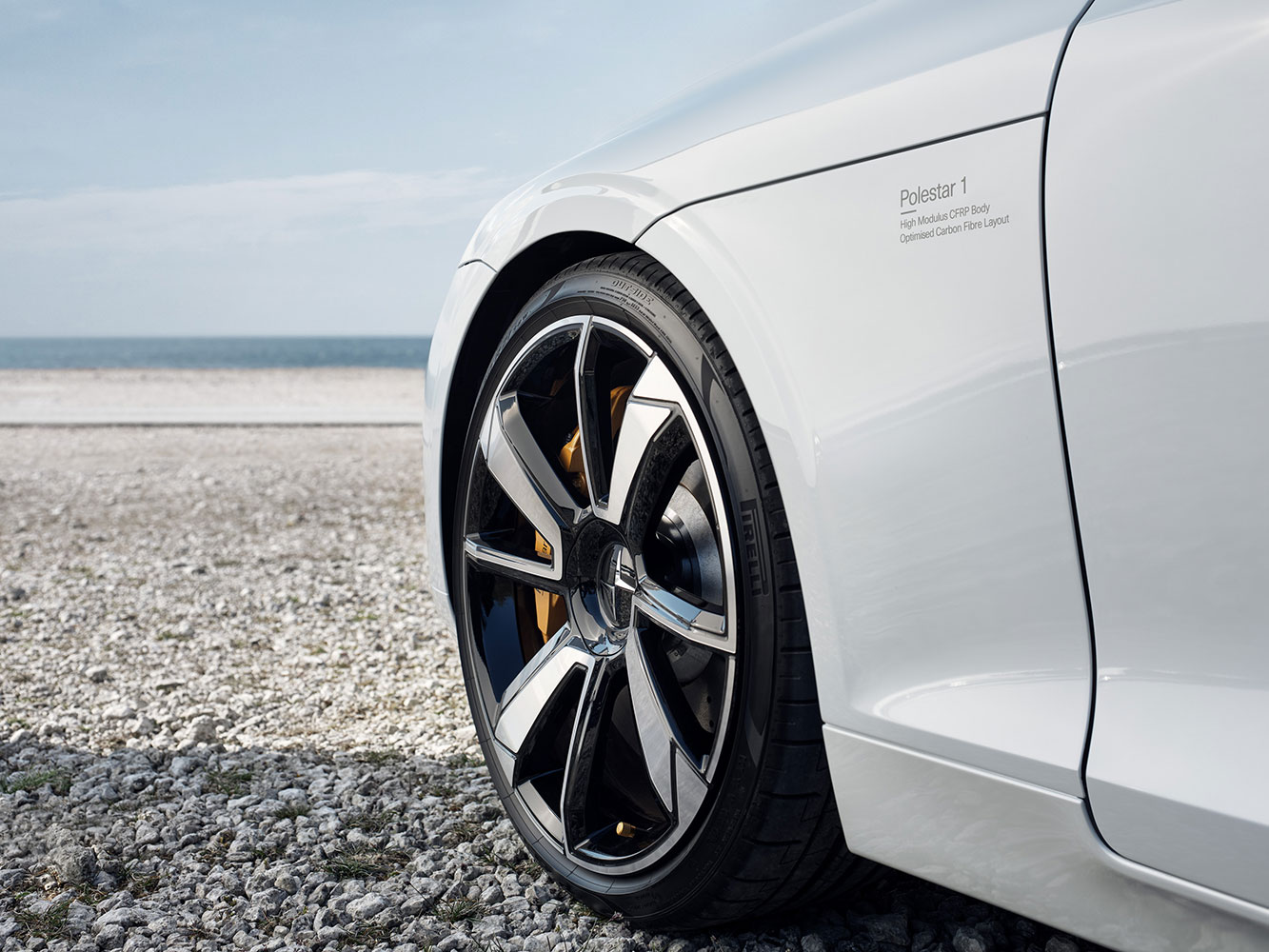
The interior is precisely designed, intuitive, uncluttered and comfortable – if perhaps a touch clinical. The seats are soft and hugging, and the driver elements are in logical positions. The format is 2+2 with the focus on the driver and front passenger space, and there is a clever interaction of lines and light that appears to swallow the interior volume. The cabin features leather extensively, which is perhaps a missed opportunity to explore luxury materials beyond the conventional. The Polestar 2, though, will feature vegan fabrics. This car comes with a high spec as standard to include Bowers and Wilkins stereo, and curiously against the growing trend for personalisation, customers will only be given a choice of two colours – dark grey and beige. The exterior options are also restricted to include chrome or black, wheels with three different finishes and five paint colours in gloss or matt finish.
All this is down to Thomas Ingenlath, the designer and company chief executive who is directing every single element of the Polestar brand. He is very clear that customers will not have a free reign with Polestar cars – instead his team will direct design themes. ‘For a company with such an appreciation of great design, we have to make very clear choices,’ he explained when the Polestar 1 was announced. ‘I think we take away an incredible headache for customers of being lost in the sheer amount of choice they have these days.’ Production numbers will be kept low to maintain a sense of exclusivity, with only 1,500 Polestar 1 cars planned in total at the Snøhetta-designed Chengdu facility in China. Asked who will buy this car, Ingenlath, who considers Tesla and Spotify as inspirational companies, thinks they will need to be progressive and open minded, and not tied down to heritage brands.
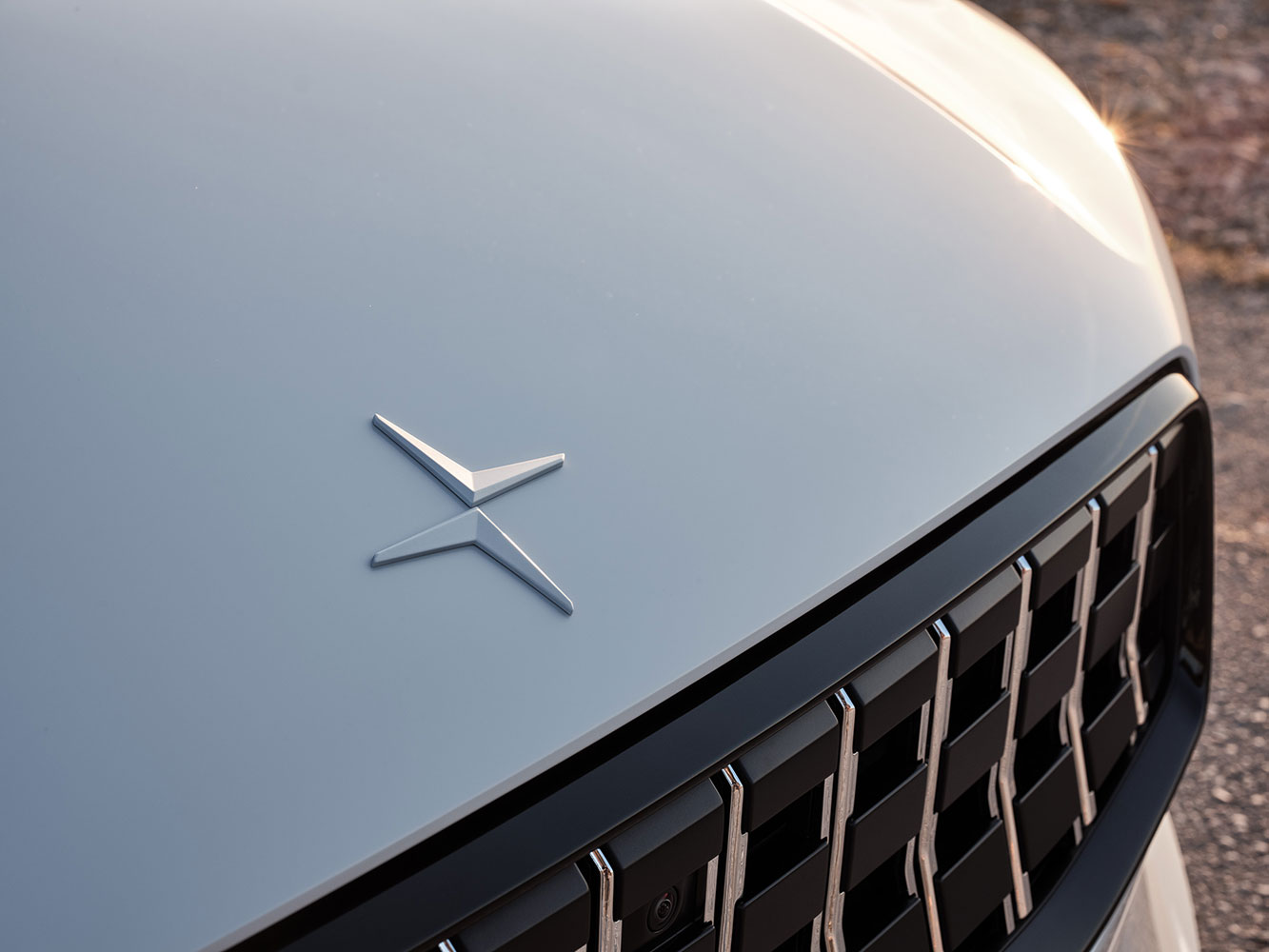
The exciting story here perhaps isn’t so much the car we’re driving, as what the brand represents – of how the electric car evolution has opened the gates for companies like Tesla and Byton and Polestar to compete against the big traditional players with a great advantage of no history, no baggage and less formality in how they plan products. Everything with Polestar is considered – from the sustainable production methods, to the electric drivetrain, clear functional design, and with later products, vegan interior, affordable price and shared ownership schemes.
It tells a bold story of the car as consumer technology. Talking to Ingenlath, you get the sense that it is with Polestar 2 and the cars that follow where the true story of the new company will begin.
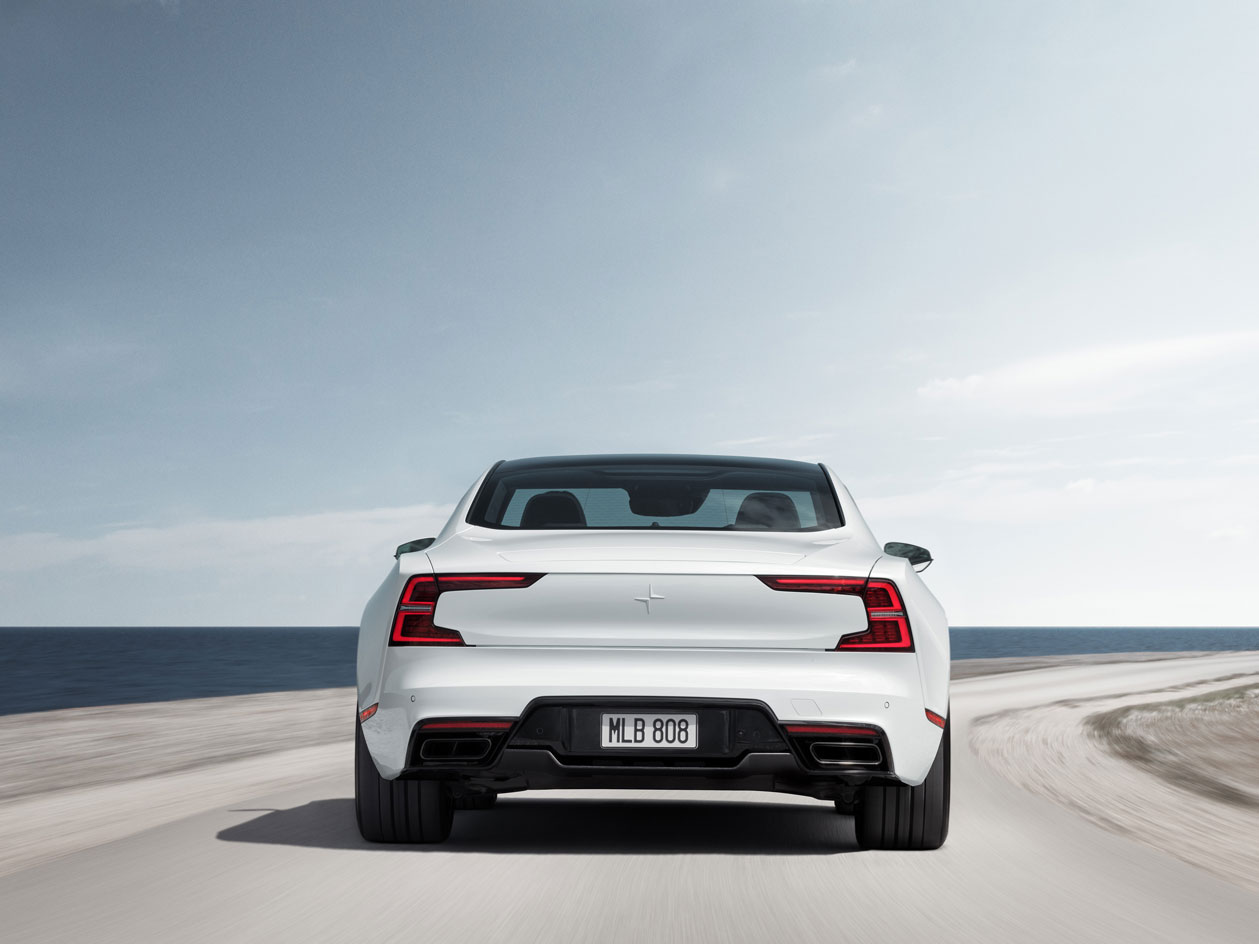
INFORMATION
polestar.com
Receive our daily digest of inspiration, escapism and design stories from around the world direct to your inbox.
A writer and editor based in London, Nargess contributes to various international publications on all aspects of culture. She is editorial director on Voices, a US publication on wine, and has authored a few lifestyle books, including The Life Negroni.
-
 Veronica Ditting’s collection of tiny tomes is a big draw at London's Tenderbooks
Veronica Ditting’s collection of tiny tomes is a big draw at London's TenderbooksAt London bookshop Tenderbooks, 'Small Print' is an exhibition by creative director Veronica Ditting that explores and celebrates the appeal of books that fit in the palm of your hand
-
 How Beirut's emerging designers tell a story of resilience in creativity
How Beirut's emerging designers tell a story of resilience in creativityThe second in our Design Cities series, Beirut is a model of resourcefulness and adaptability: we look at how the layered history of the city is reflected in its designers' output
-
 A day in Ahmedabad – tour the Indian city’s captivating architecture
A day in Ahmedabad – tour the Indian city’s captivating architectureIndia’s Ahmedabad has a thriving architecture scene and a rich legacy; architect, writer and photographer Nipun Prabhakar shares his tips for the perfect tour
-
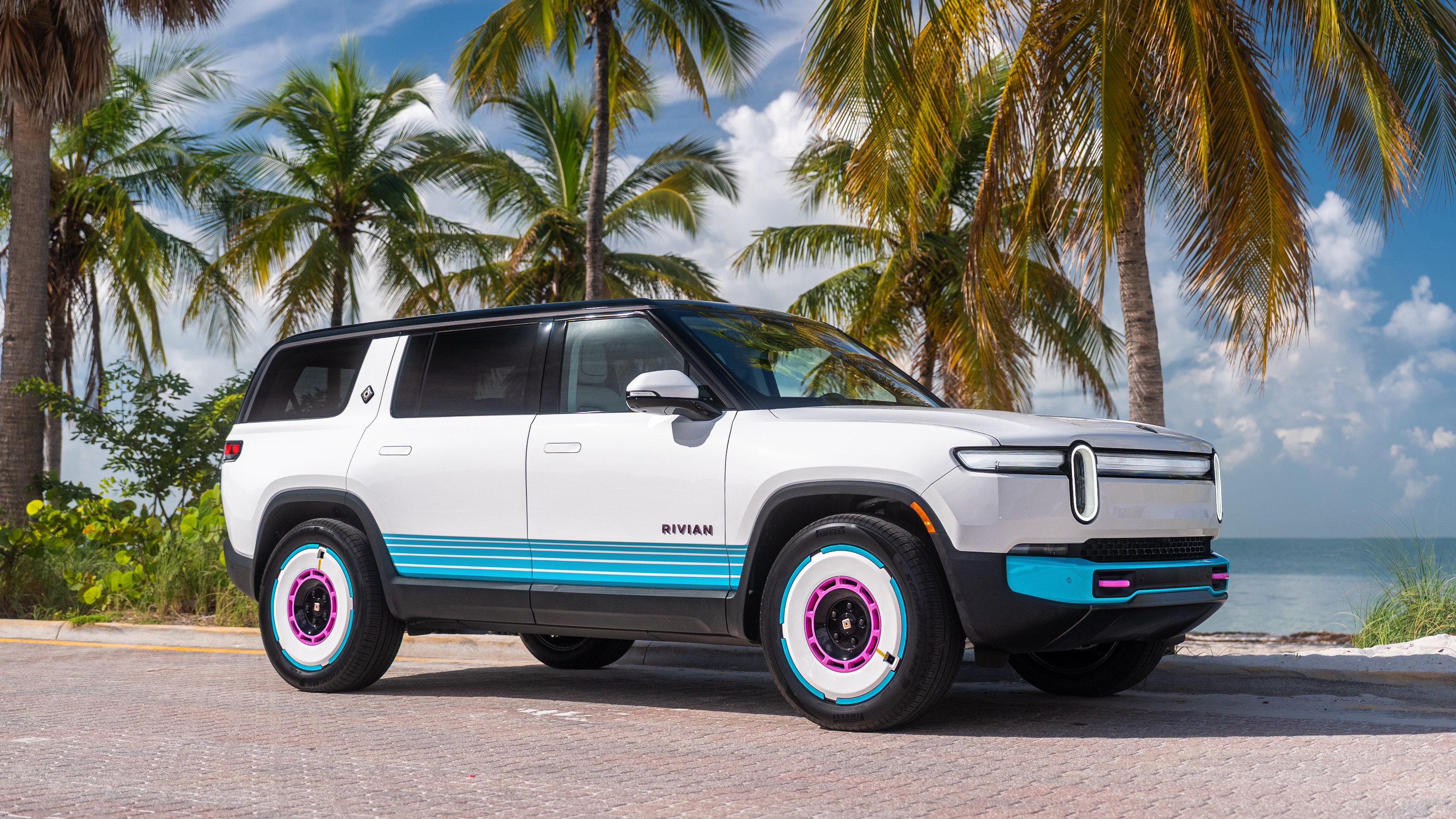 Rivian hits Miami Art Week to release R1S Quad Miami Edition, a new colour and a scent
Rivian hits Miami Art Week to release R1S Quad Miami Edition, a new colour and a scentVivid sights and evocative smells are part of Rivian’s quest to humanise its all-electric SUVs
-
 RBW EV brings a much-loved classic sports car aesthetic into the modern era
RBW EV brings a much-loved classic sports car aesthetic into the modern eraThe RBW Roadster and GT hark back to a golden age of sports car design. Under the skin, these British-built machines feature bespoke all-electric running gear
-
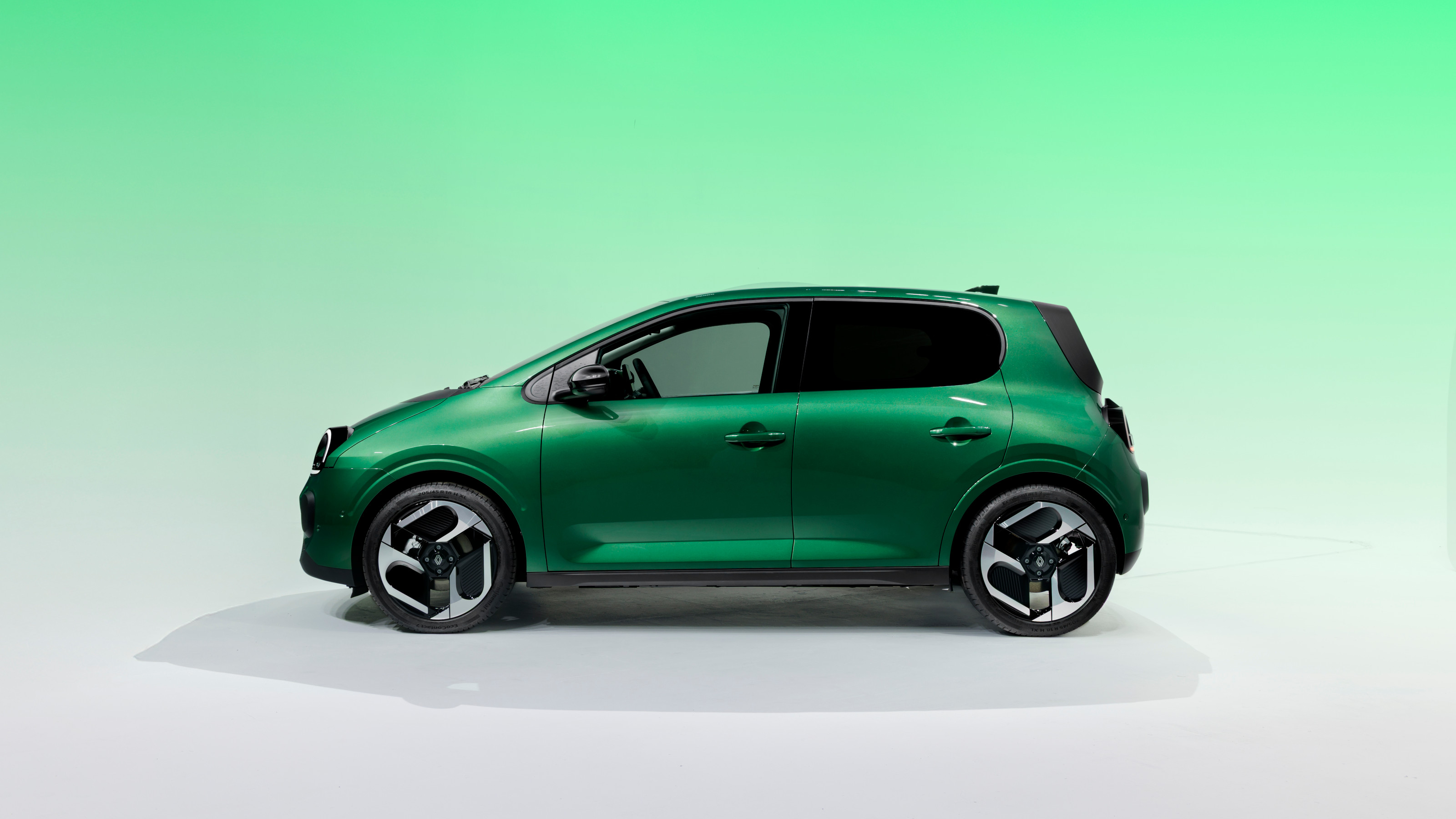 All hail the compact new Renault Twingo E-Tech – the city car is back in style
All hail the compact new Renault Twingo E-Tech – the city car is back in styleRenault continues to pay homage to its heritage by combining it with 21st-century technology. The new Twingo E-Tech is another winner
-
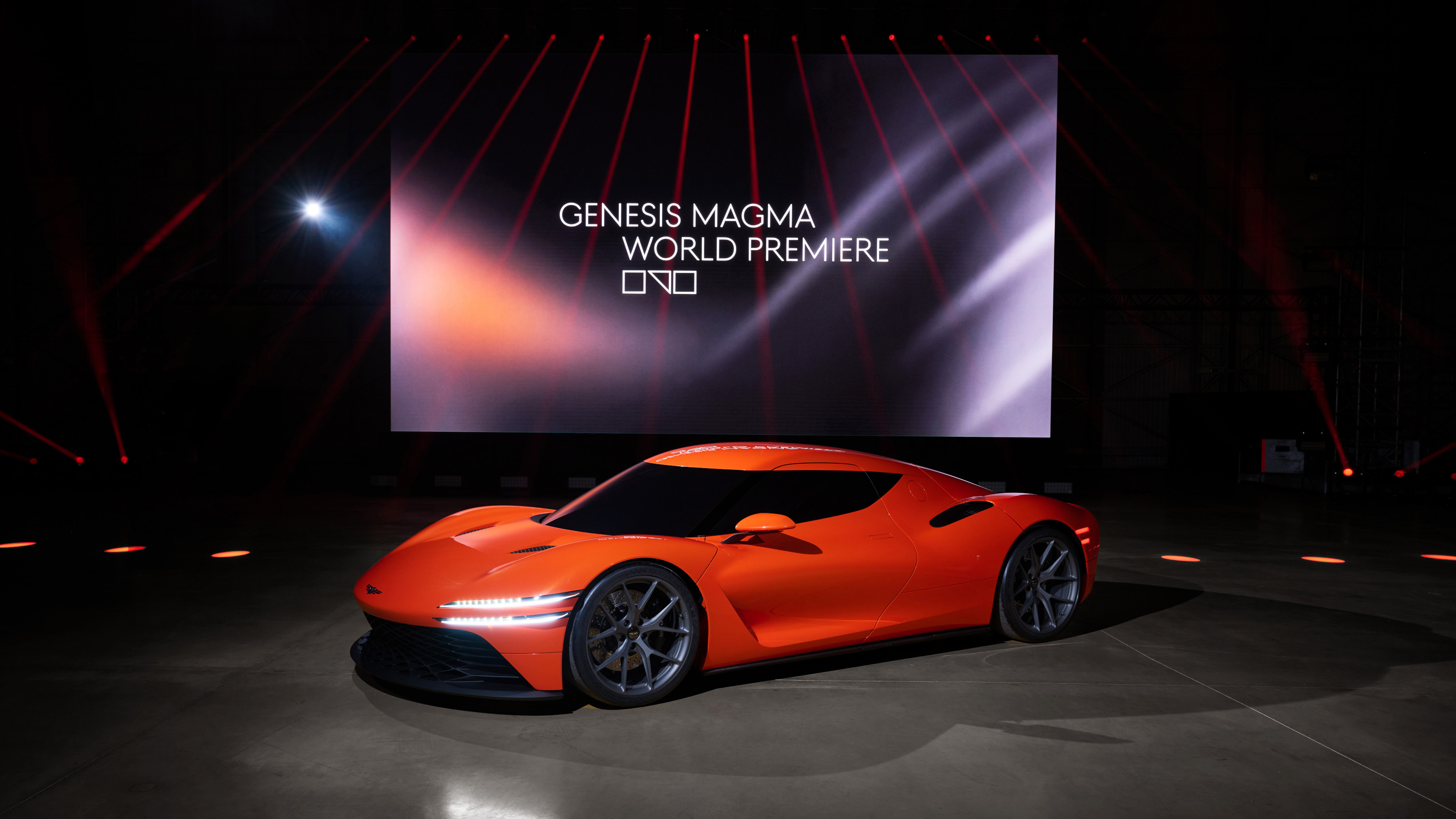 Genesis turns up the heat with its new Magma performance sub-brand
Genesis turns up the heat with its new Magma performance sub-brandGenesis has revealed the hot new GV60 Magma and striking Magma GT Concept in its quest to own luxury performance
-
 Around London in sybaritic silence with the majestic all-electric Lunaz Phantom V
Around London in sybaritic silence with the majestic all-electric Lunaz Phantom VClassic electrifier Lunaz has turned its skilled hands to the Rolls-Royce Phantom V. We sample the ultimate in zero-emission luxury on the streets of London
-
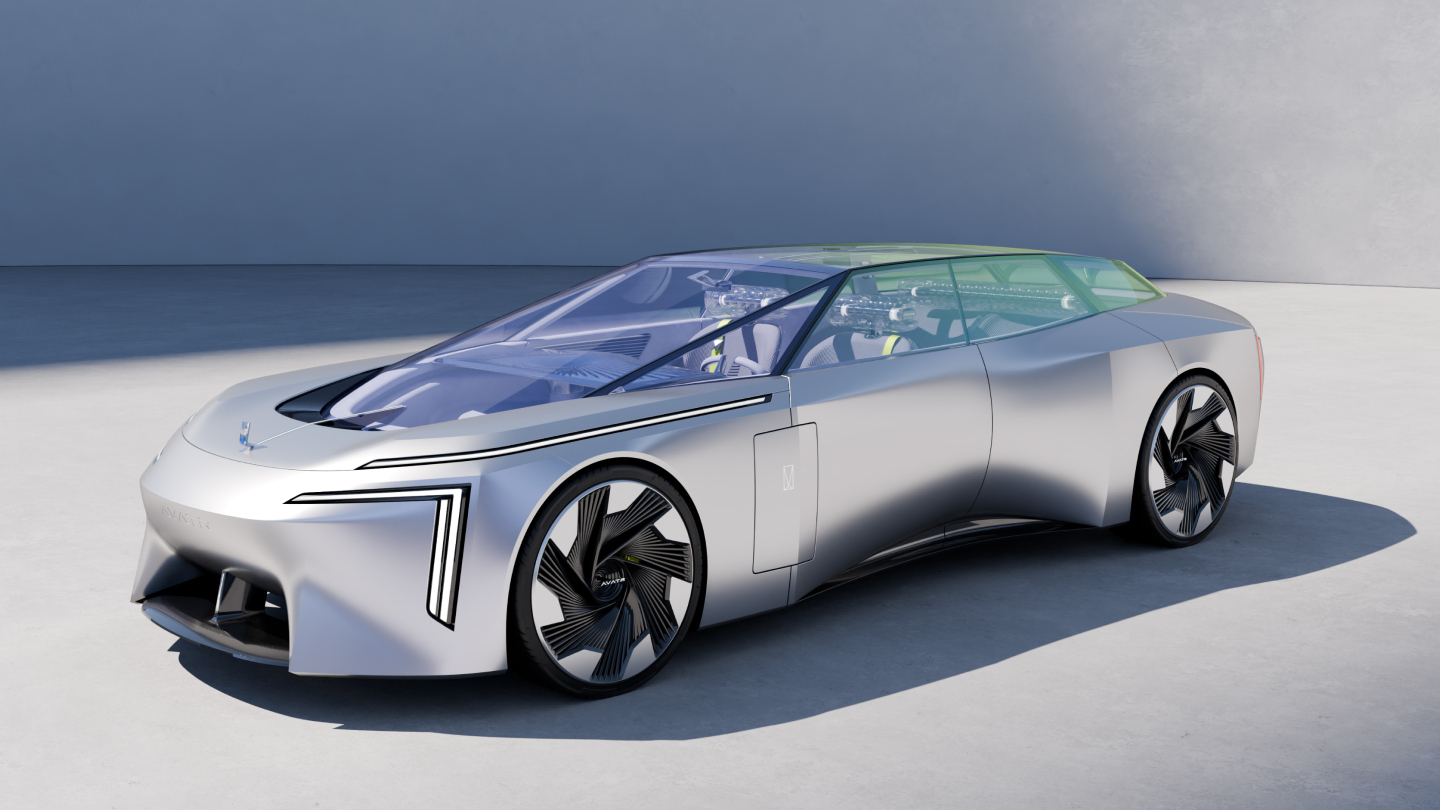 Avatr Vision Xpectra concept transforms cars into ‘emotionally intelligent companions’
Avatr Vision Xpectra concept transforms cars into ‘emotionally intelligent companions’Revealed in Munich, electric car maker Avatr’s futuristic Vision Xpectra is a car that is not only beautiful, but a true form of ‘emotive luxury’
-
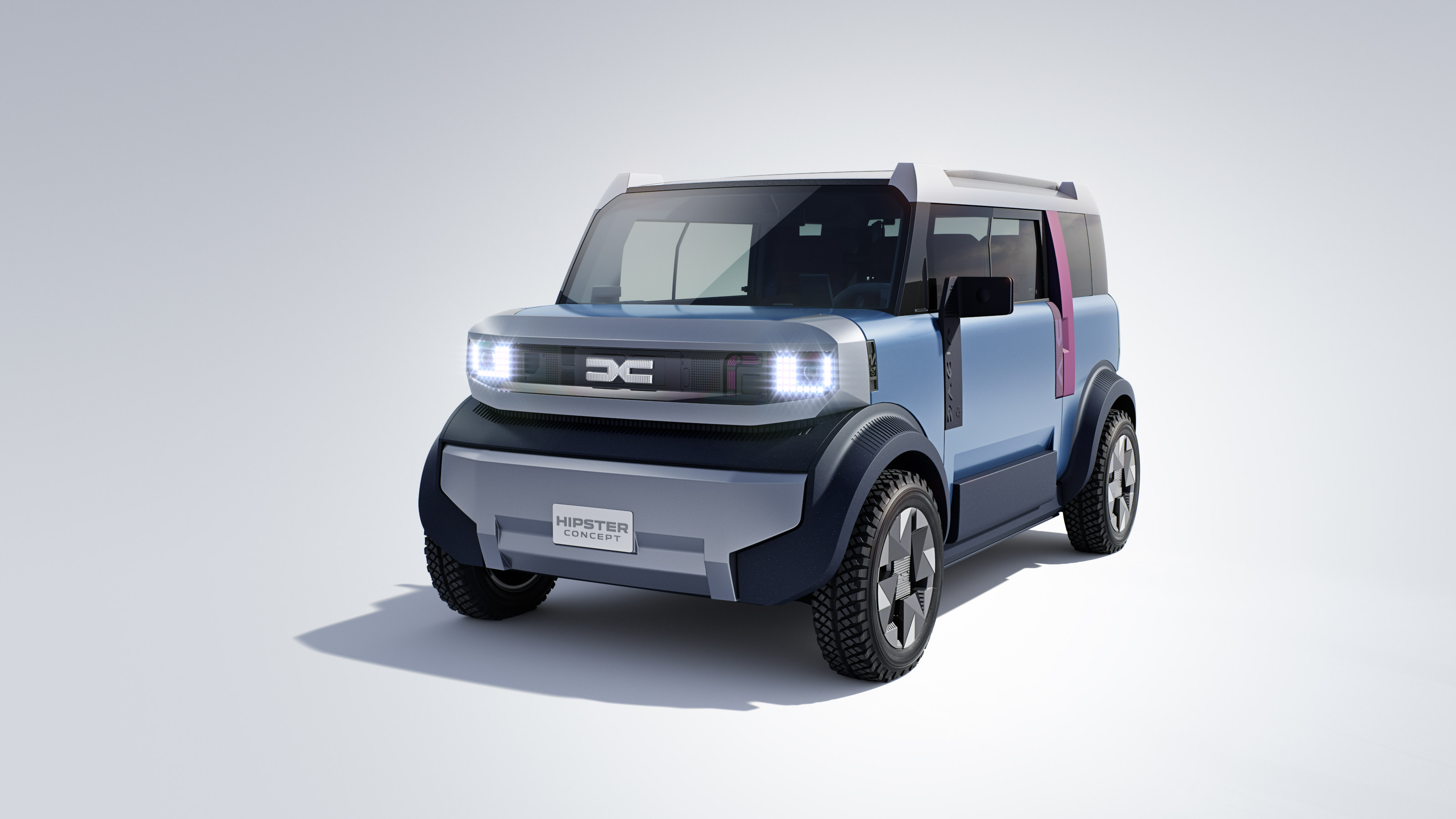 Dacia wants to make small cars great again – all hail the new Hipster Concept
Dacia wants to make small cars great again – all hail the new Hipster ConceptThe best way to minimise energy use in all its forms is to downsize. The Dacia Hipster Concept is a smart way of making a practical car way more pint-sized
-
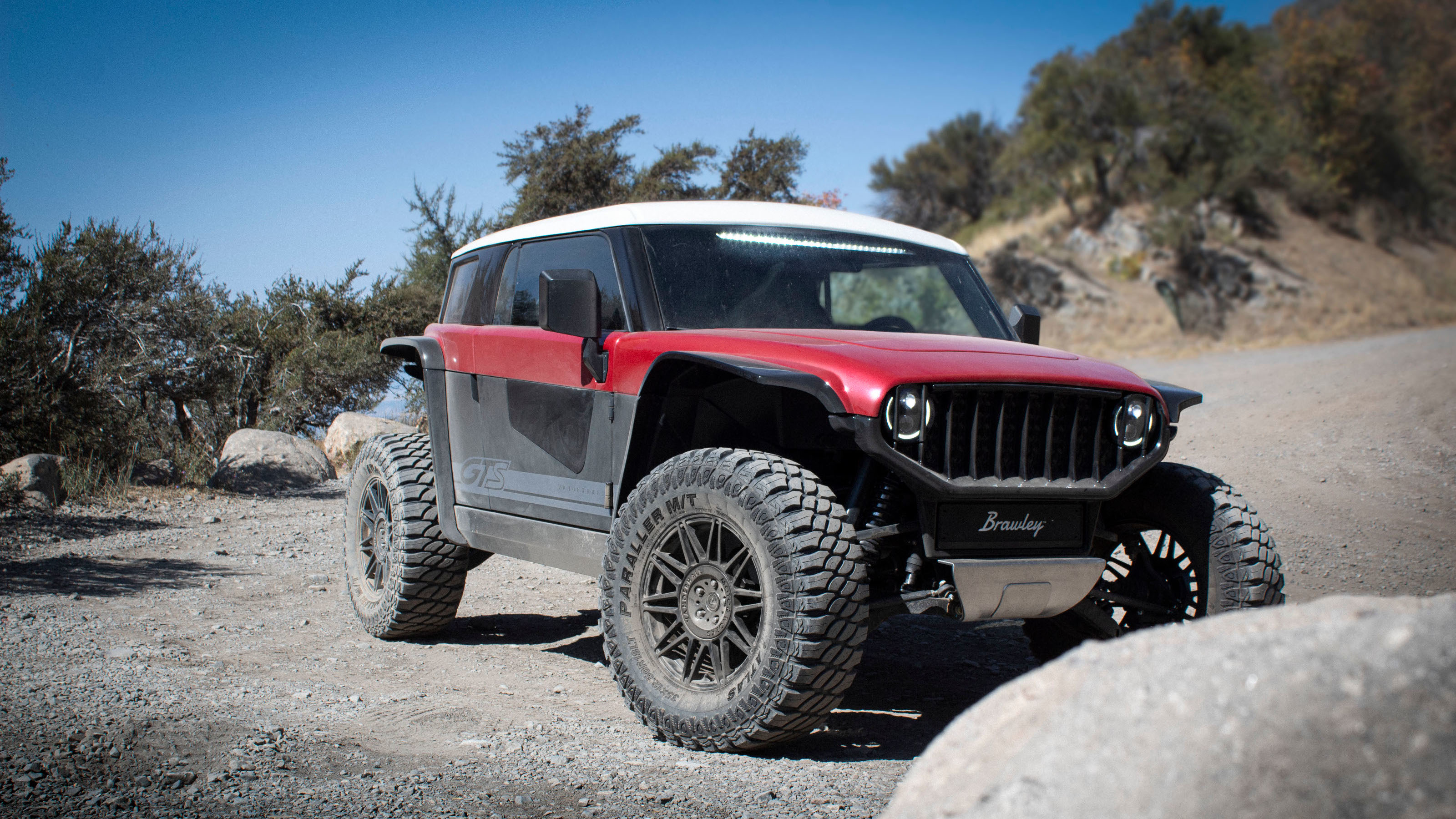 The Vanderhall Brawley GTS is a compact but mighty electric off-roader
The Vanderhall Brawley GTS is a compact but mighty electric off-roaderDeliveries of Vanderhall’s Brawley GTS have started, bringing zero-emission trail driving to enthusiasts across America